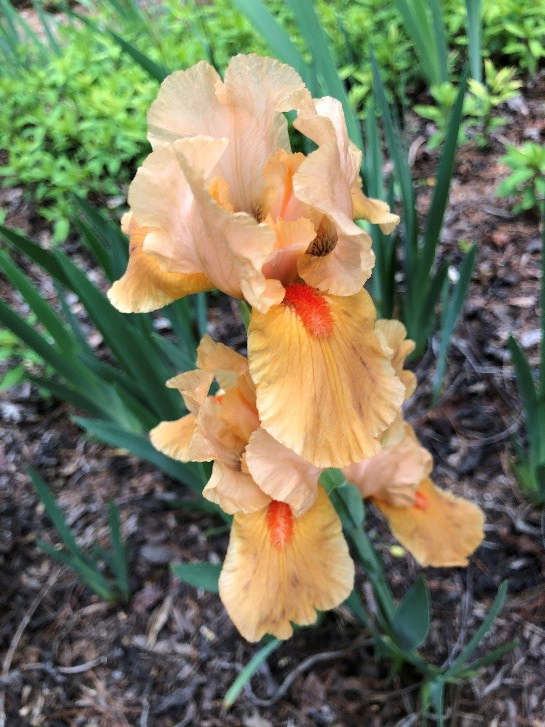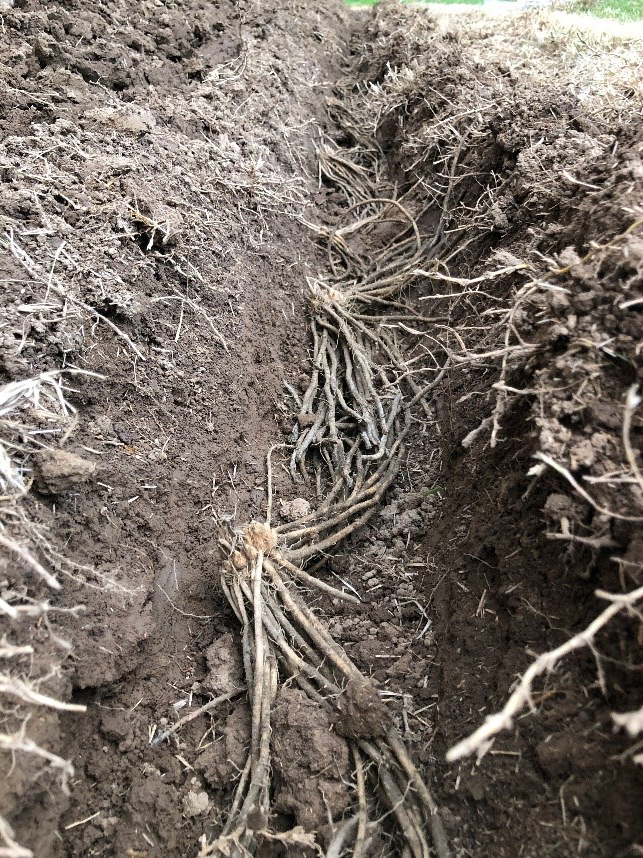I often have people tell me they don’t grow iris because the bloom just doesn’t last long enough. Since I have had a lifelong affair with iris, my jungle includes quite a collection of iris and they do have a rather short window. Regardless, I decided long ago I preferred to savor their ephemeral beautiful rather than foregoing them all together. With that in mind though, I have to work all the harder to balance a sea of green swords after the blooms have all faded...another good reason to acquire more plants! Iris do differ in how long each individual flower last; some as short as a single day like daylilies, while others will last a week or more. Length of bloom tends to be shorter when temperatures are warmer than normal, so I always appreciate cool temperatures this time of year to extend bloom time. One of my favorite types of iris are the arilbred, which are the result from crossing one of the bearded iris with one of the aril iris. Aril iris produce some of the most spectacular and exotic blooms within the species, but are rather difficult to propagate and keep alive in our growing conditions. Crossing an aril iris with a bearded iris improves its adaptability to a garden setting, while retaining some of that exotic ‘taste’ of the aril parent. Even though they come in all sizes, colors, patterns and forms, there is always just something about each one that tells you something is different about this iris. Arilbred irises do best under full sun on a well-drained site, preferably on the dry side during the summer and winter months.
It’s not all about flowers in my jungle. I recently planted a new row of 25 asparagus crowns and in a few years, if everything goes as planned, they will be fully productive. But the main benefit of this planting is I should have enough that some might actually make it into the house where where the entire family get to experience fresh-picked asparagus. My other planting is so small, it all goes directly into whoesever’s mouth gets to it first!
Asparagus is dioecious, meaning there are separate male and female plants. In general the male plants produce larger spears and are more productive, so I chose the all-male hybrid ‘Millenium’ for my new planting. I also chose to purchase crowns over seed to get a jump on production. Asparagus should not be harvested the year of crown planting in order for the plant to grow and develop a strong root system to support the many years of harvest to come. Because I planted a vigorous variety, I hope to take a very small crop next year...no more than two weeks. Older, less vigorus varieties should be allowed to grow an additional year before taking the first small crop (i.e year three). If everything goes according to plan for my asparagus, I hope to increase my harvest window an additional two weeks every year until I reach the maximum eight weeks of harvest by year five. Of course, I may be in charge of growing a good plant, but Mother Nature will ultimately determine how long my harvest season will be each year.


